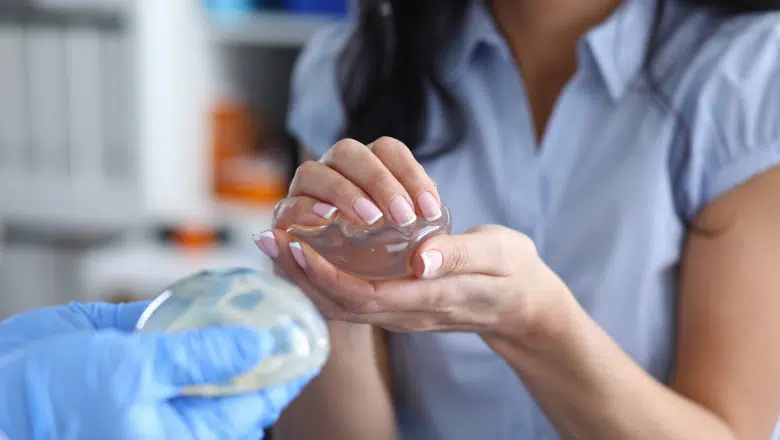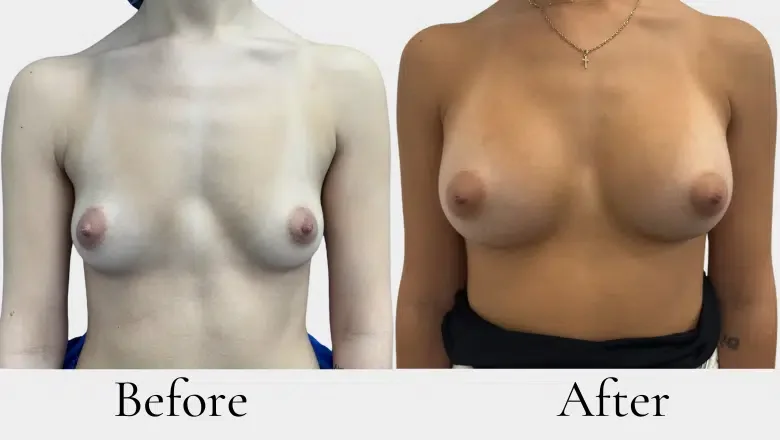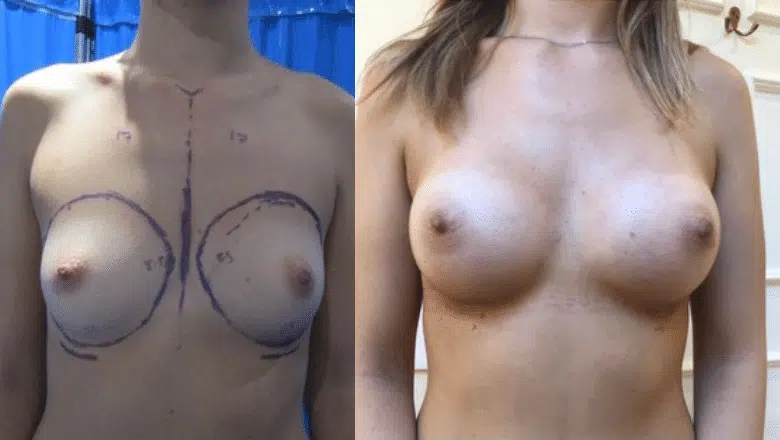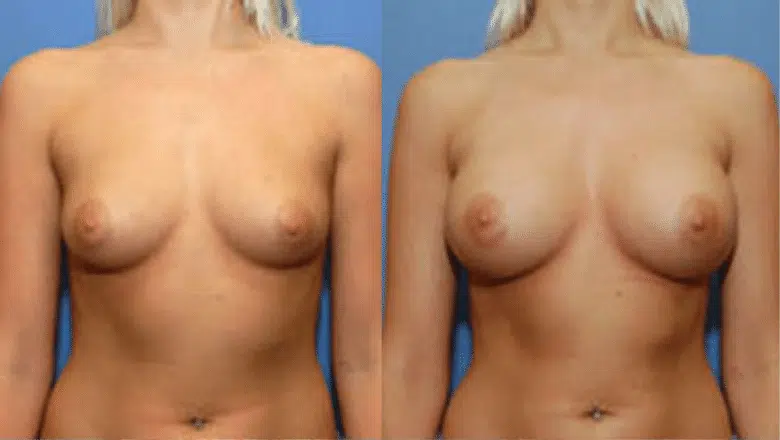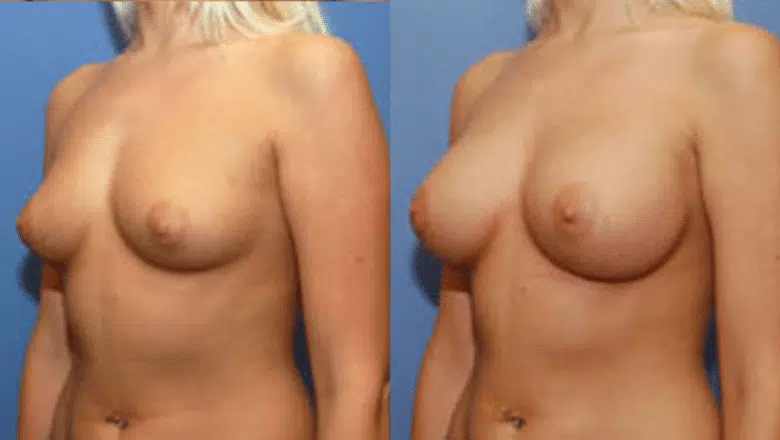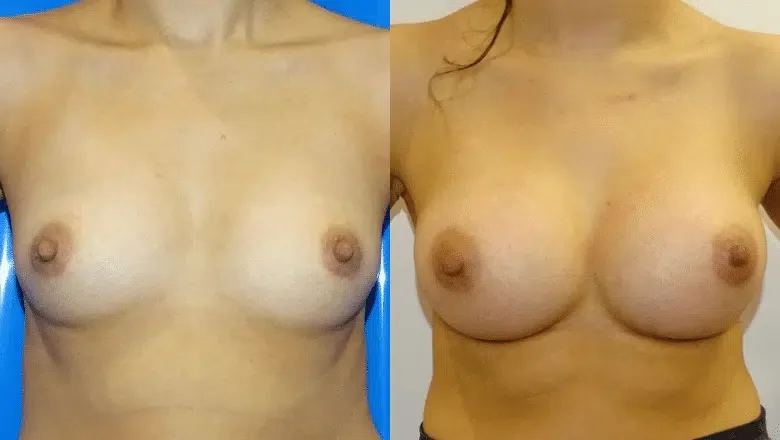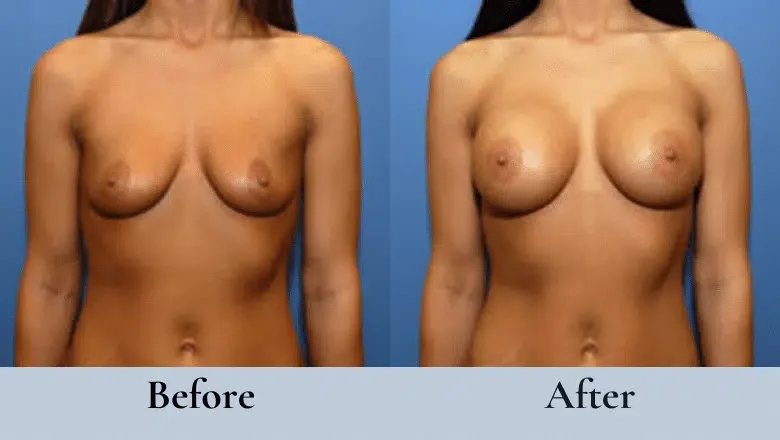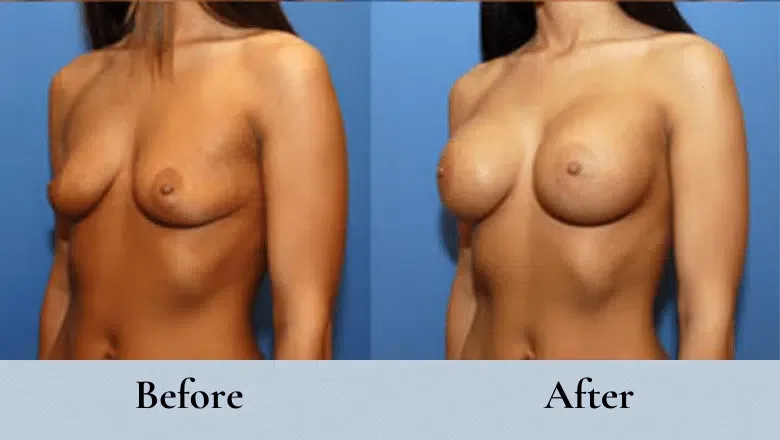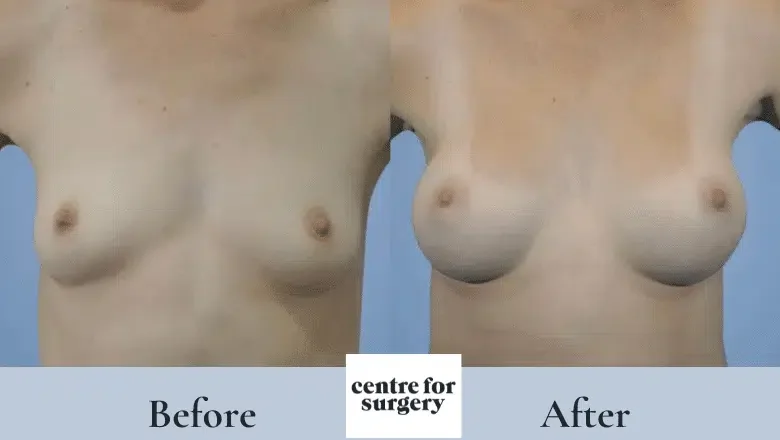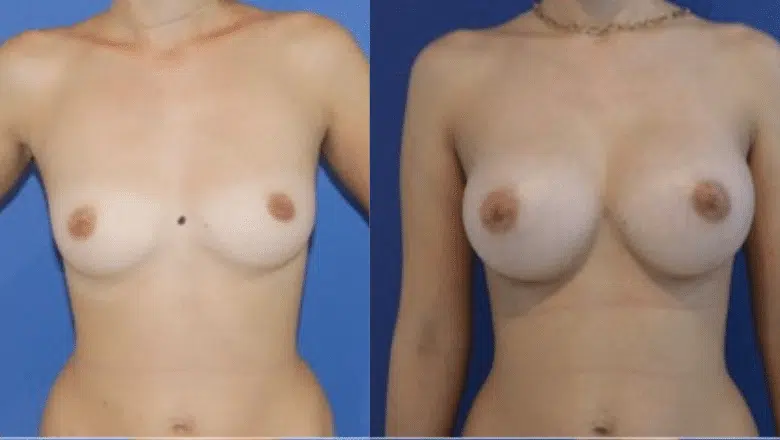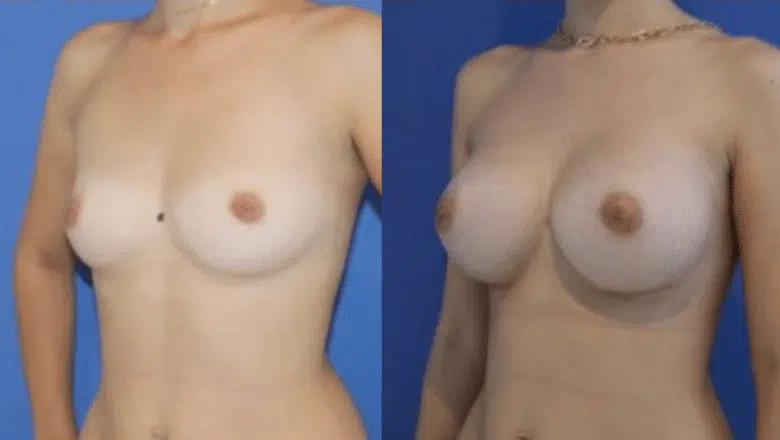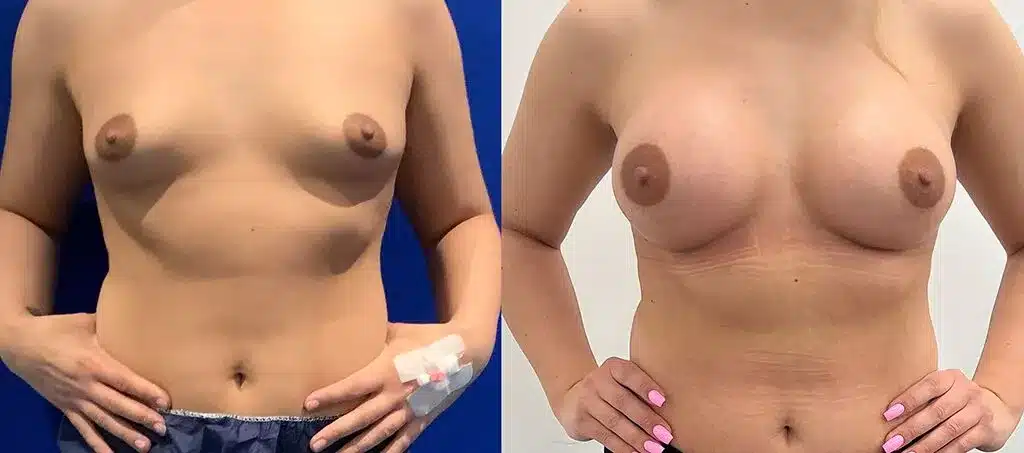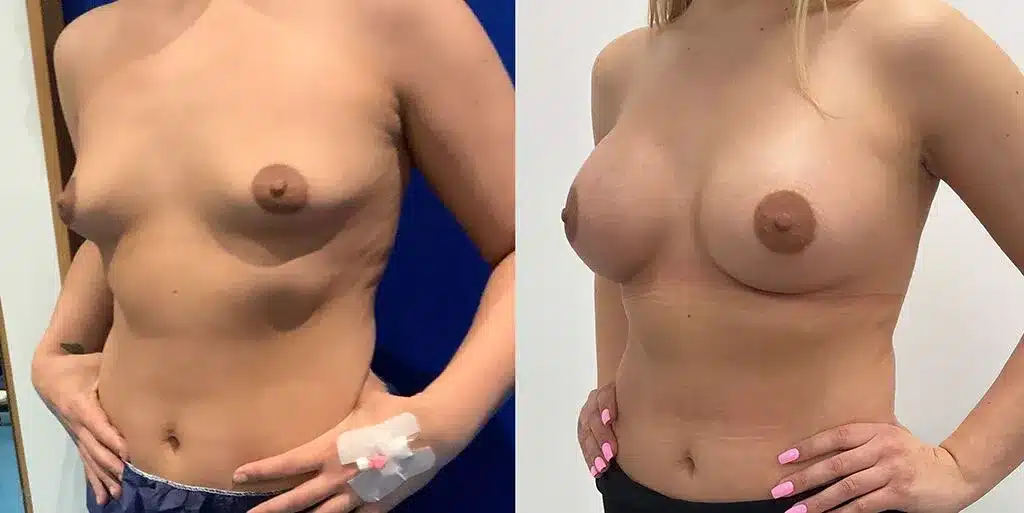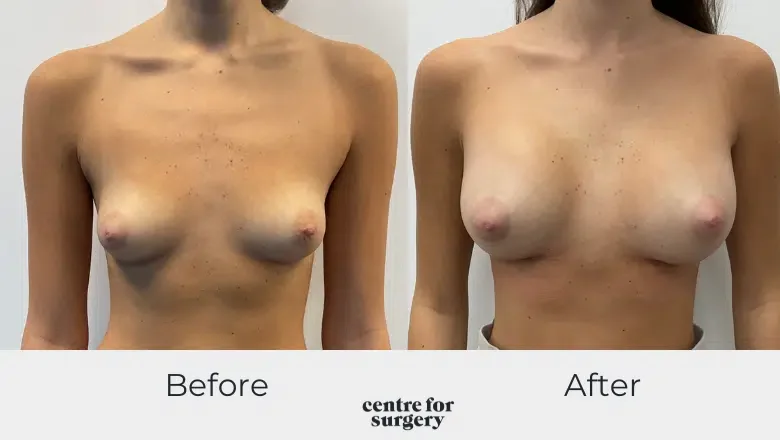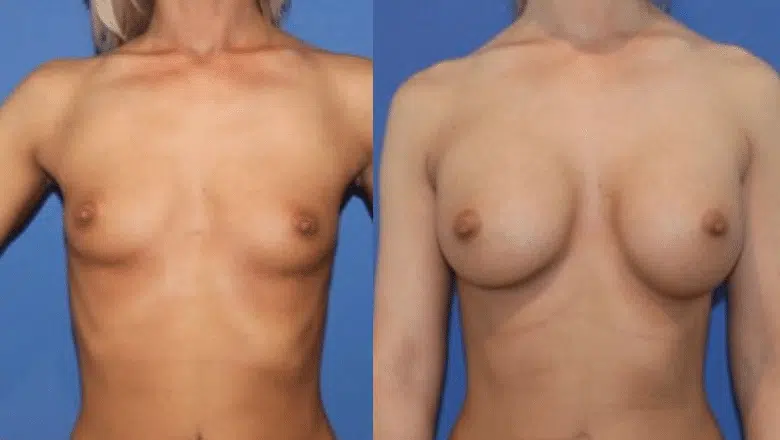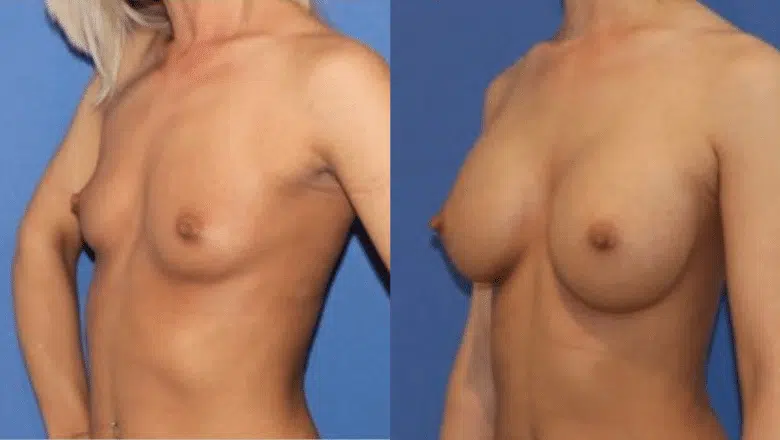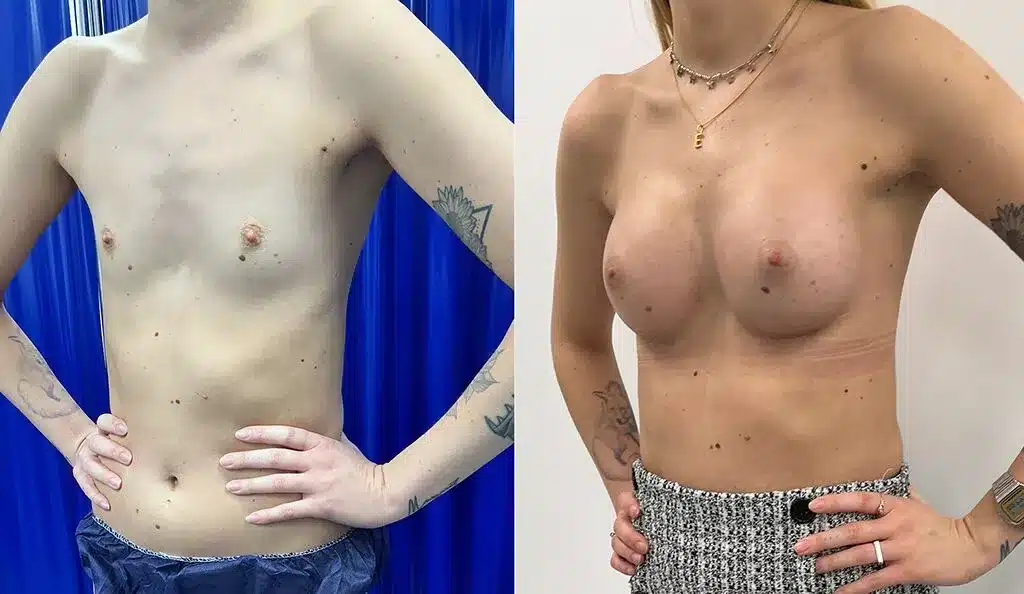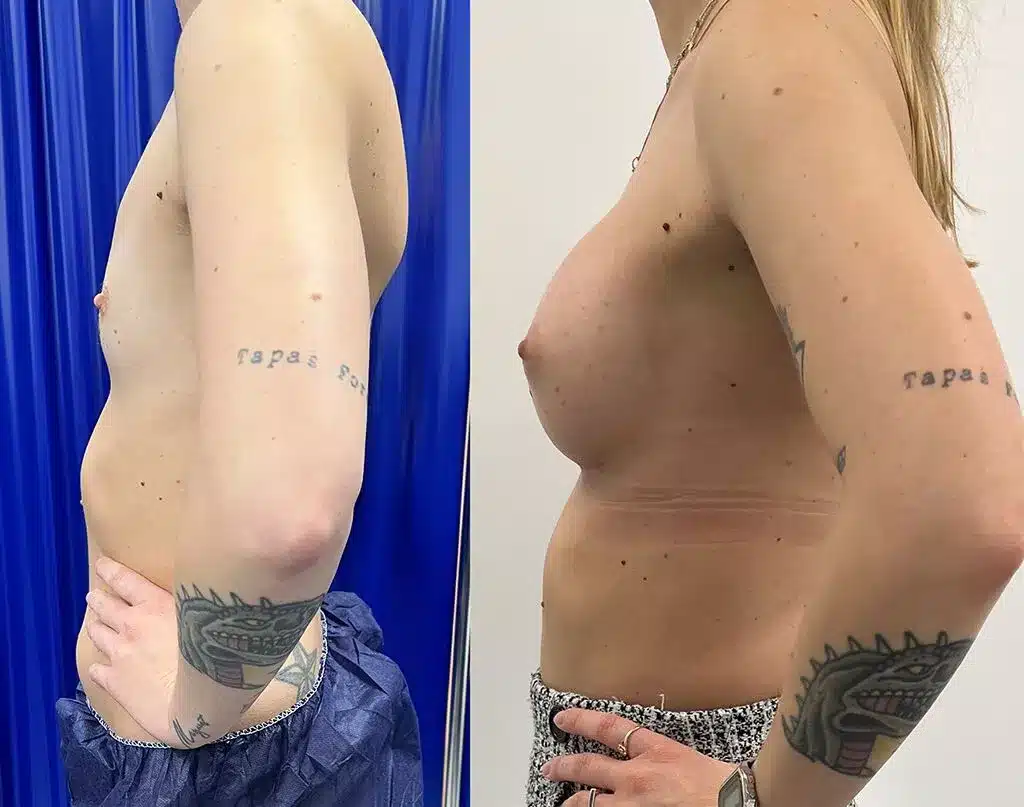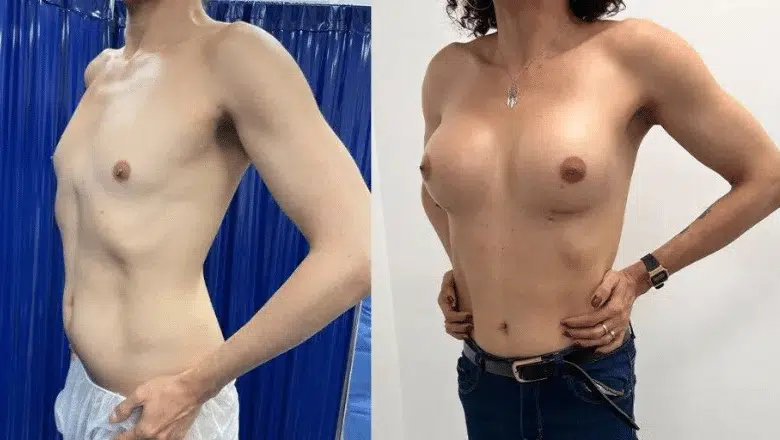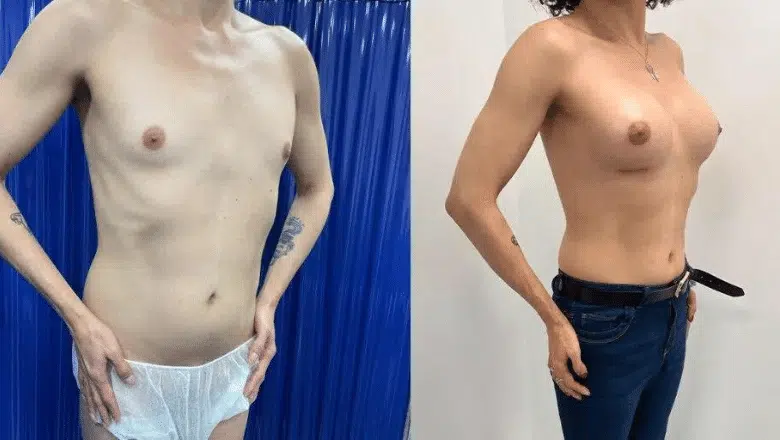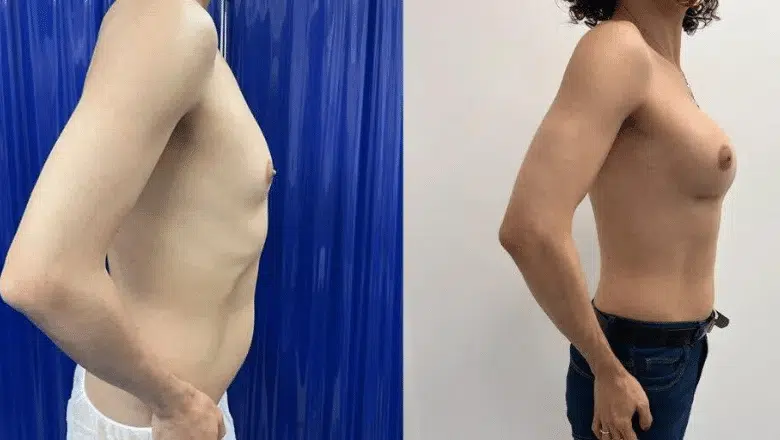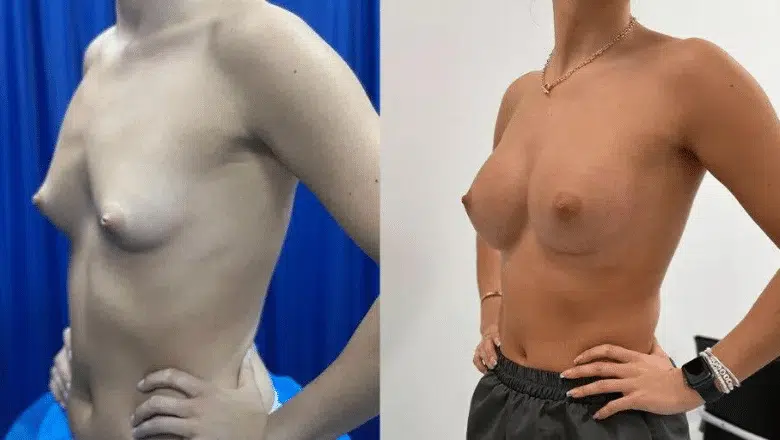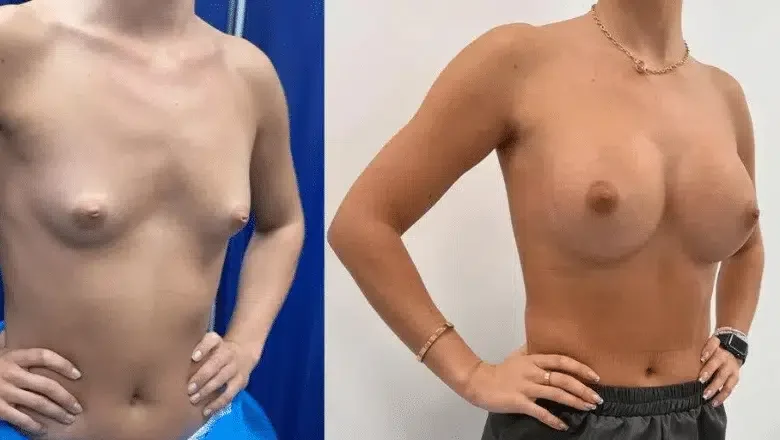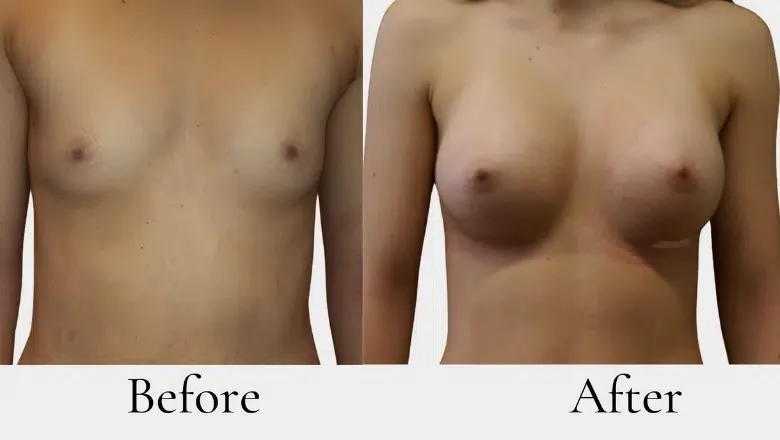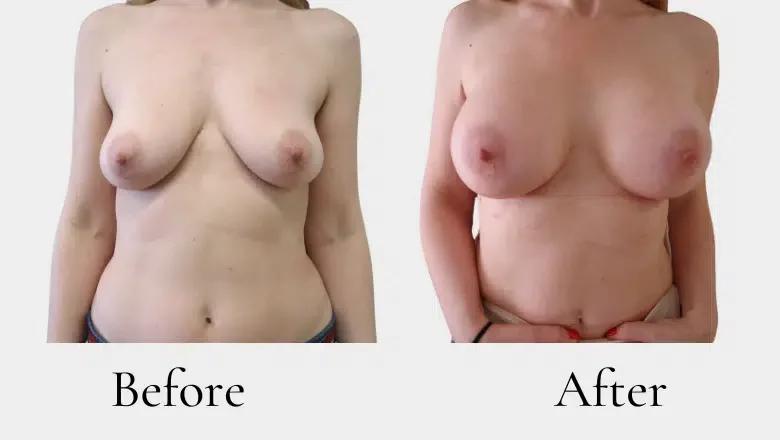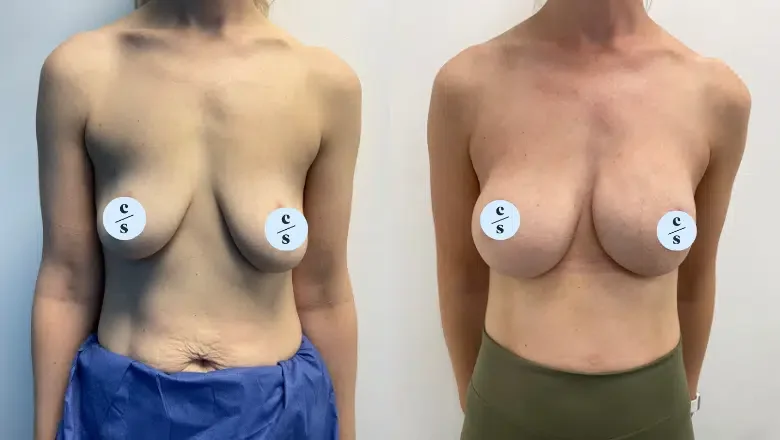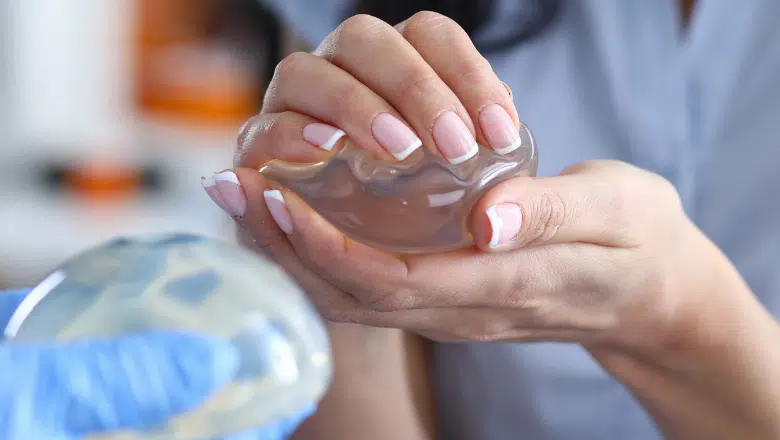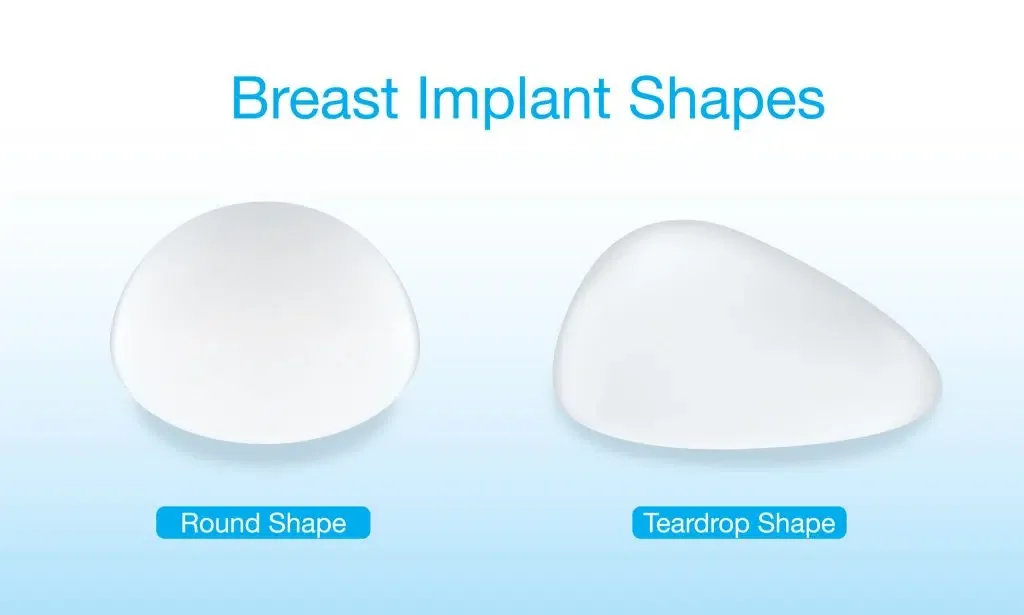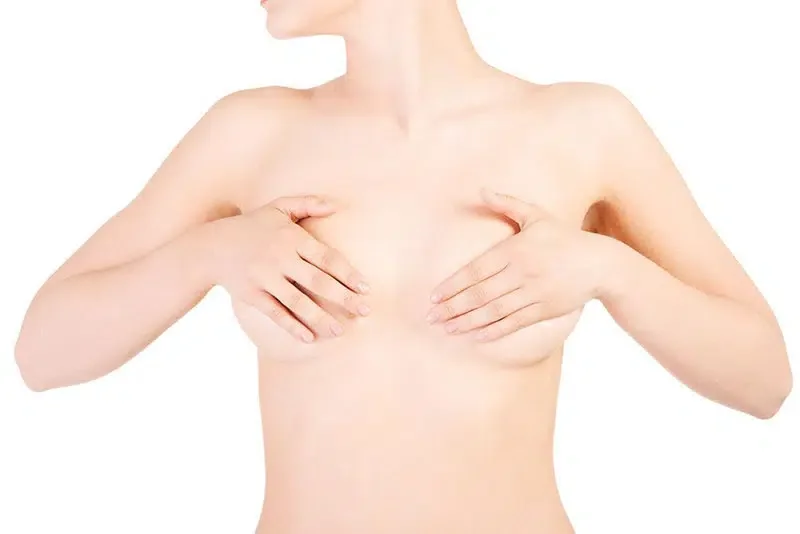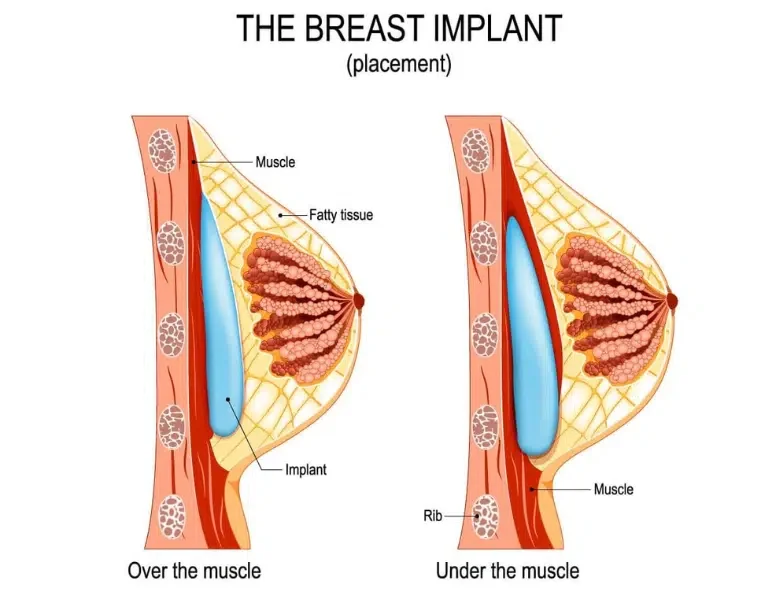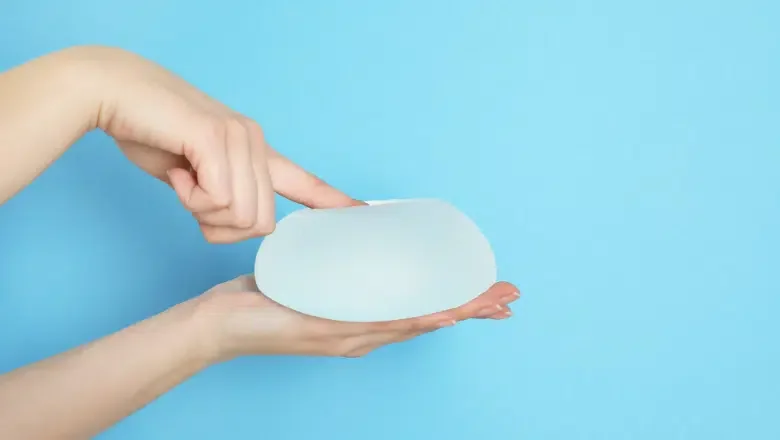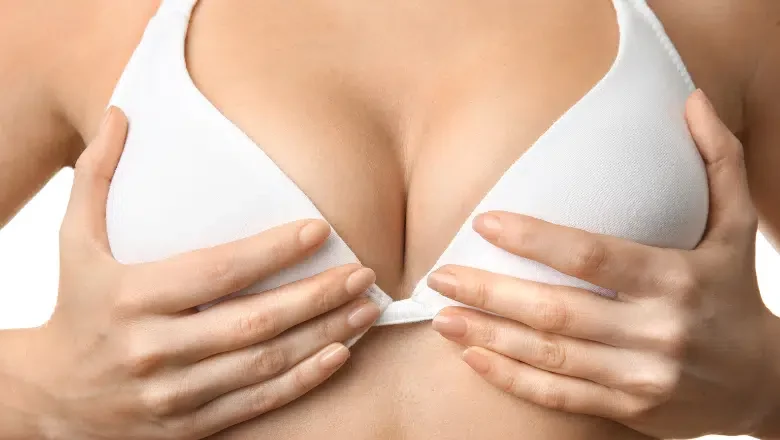What are my Breast Implant Options?
Breast implants are commonly used for breast augmentation, breast lift with implants and breast implant replacement surgery. Here, we discuss the different breast implant options available at Centre for Surgery.
RELATED: What Are The Different Types Of Breast Implants?
Options for your breast implants and surgery
Once you have decided to have breast implants, the next step is to consider the best breast implant options for your surgery, including:
- Breast implant fill material – saline and silicone implants
- Size and projection of the implant – measured in cc’s / low profile or high profile.
- Implant surface texture – smooth or textured
- Implant shape – round or teardrop
- Incision location – inframammary, periareolar or transaxillary (armpit)
- Breast implant placement – above the muscle, below the muscle (dual plane)
Centre for Surgery in London is home to some of the top breast implant surgeons in the UK, and they will work closely with you to help you achieve natural-looking results for a significant boost in self-confidence.
RELATED: What are the most natural-looking breast implants?
Breast implants have undergone substantial evolution over the past 40 years. Early breast implants were composed of a very runny, almost liquid type of silicone. Saline breast implants lack the natural-looking feel of modern silicone implants and are rarely used in the UK. Both patients and surgeons prefer the latest fourth-generation silicone gel breast implants. Surgical techniques have evolved significantly as the composition of the internal silicone gel with highly advanced outer implant shells has made breast augmentation surgery a very safe procedure. Patients can now look forward to achieving natural-looking results with a very favourable risk profile. We commonly get asked about how to choose the best breast implants. Read further to learn about the available implant options.
Type of Breast Implant Fill Material
All the latest generation breast implants have a rubbery outer silicone shell regardless of the internal fill material.
RELATED: Silicone vs Saline Breast Implants
There are two main types of breast implant fill material:
- Saline (saltwater)
- Silicone gel
Saline-filled breast implants
Saline-filled implants are often described as feeling similar to a water bed, and this can cause a ripple effect. Breast implant rippling is a recognised problem affecting saline implants. Women who have a minimal amount of breast tissue may have a higher risk of developing implant rippling, which may be easily visible through the skin of the breast. This problem can be minimised by using round implants with a smooth surface. By overfilling the implants, the implant feels firmer to the touch, but at the expense of taking on a more spherical shape. Most women do not consider this a natural appearance, although what constitutes an ideal appearance will differ between women. If saline implants were to deflate, they most commonly do so within 2 to 3 hours of surgery. Saline implant deflation enables the body to absorb the internal saline solution with no adverse consequences safely. Saline implants have a higher risk of capsular contracture and ‘bottoming out’ than silicone implants.
Silicone gel-filled breast implants
Silicone gel implants have a significantly lower risk of implant rippling compared to saline implants. The silicone gel has a better consistency, which is thought to minimise rippling. Silicone implants have a much more natural feel that resembles natural breast tissue and hold their shape better than saline implants. Unlike saline implants, silicone implants maintain shape better when placed in the breast. Silicone implants have a low risk of deflation, although there is a risk of implant rupture in rare cases or where traumatic injury has occurred to the chest.
Modern implants contain medical-grade silicone designed not to migrate if a rupture occurs. Silicone implant leakage or rupture can increase the risk of developing capsular contracture, a condition characterised by the hardening of the breast tissue. Fortunately, implant rupture is a rare occurrence, and the vast majority of women have had intact breast implants for many years. If a silicone implant ruptures, you will need to have your breast implants removed and replaced immediately. Our surgeons can advise you on the different types of implants available and recommend the one that best suits your treatment goals.
Saline Implants vs. Silicone Implants: Which Is Best?
Saline implants were a commonly used type of implant approximately 20 years ago, when surgeons had doubts about the quality of silicone implants that were then available. Today, surgeons are no longer concerned about silicone implants due to the significant advances in silicone gel technology and the evolution in manufacturing processes. If you specifically request saline implants, our surgeons can still provide them. However, it is essential to be aware of the significant differences in terms of appearance and potential complications, including implant rippling.
Silicone implants are the best type of implant with many advantages, including:
- Their natural look
- A more natural feel, both at rest and during dynamic movement.
- High-quality cohesive silicone gel helps to prevent leakage
- They are not at risk of sudden deflation, unlike silicone implants
- Patients are better able to make accurate sizing choices
- It is easier for the surgeon to predict and control the projection as they can better maintain the shape once it is placed in the breast.
Choosing the Right Size and Projection of Implant
Breast implant manufacturers, including Silimed, offer hundreds of different types of implant sizes with various dimensions. Saline implants are filled with saline after they have been placed into the breast pocket. Silicone breast implants are manufactured as a finished product and are not modified during surgery before or during breast implant placement. Most patients and surgeons prefer silicone implants due to their natural appearance and texture.
RELATED: Choosing The Right Implant Size – London Guide to Breast Implant Size
You will have a wide choice of breast implant sizes and projection options to choose from at your in-person consultation. You can work closely with your surgeon to select the right size and shape of implant for you. Your goals for treatment will determine the best breast implant size. It is vital to bear in mind that breast augmentation results will be determined by choosing an appropriate size of implant that is not too large for your anatomy. Excessively large implants can affect your skin’s elasticity, leading to stretching out of the skin envelope, and may affect your ability to carry out certain types of physical exercise.
RELATED: Common Questions about Breast Implants
During the consultation, precise measurements will be taken of your breasts, including height, weight, volume, the position of the nipples and the amount of skin elasticity. The shape of your chest wall will be analysed, and your surgery may use a breast-torso ratio to identify the ideal size of breast implant that is best suited to your chest.
Implant Surface Texture
Breast implants come in both smooth and textured varieties. The surface texture is related to the outer implant shell, which is the surface of the implant, and this is what patients can generally expect to feel under the skin.
RELATED: Does Breast Implant Texture Affect the Risk of Complications?
Smooth implants
Smooth implants appear transparent due to the lack of surface texture and often have the most natural feel. Most patients prefer smooth implants as they do not receive any differences beneath the skin. Smooth implants often rotate within the breast pocket as the outer surface cannot grip surrounding tissue. Smooth surface implants have a softer feel compared with texted implants and are technically easier to insert during breast implant surgery.
Textured implants
Textured implants have a rough feel, often resembling sandpaper. This surface is designed to allow the surrounding tissue to grip the implant surface, which reduces the likelihood of implant rotation within the breast pocket.
Over the last ten years, there has been significant controversy surrounding breast implants that have caused a great deal of confusion and panic. Textured implants have been associated with the development of a very form of lymphoma known as BIA-ALCL or breast implant-associated anaplastic large-cell lymphoma. This is an exceptionally rare condition, with only 500 patients worldwide reported to have had the condition out of an estimated 50,000,000+ women who have breast implants. The use of textured implants has dramatically reduced since the link was established between textured implants and BIA-ALCL.
We also recommend you read the guidance on BIA-ALCL from the UK government to learn more about the rare risk of BIA-ALCL.
Certain types of implants, such as very low-textured implants, also known as micro-textured or nano-textured implants, have not been linked with the development of BIA-ALCL. Here at Centre for Surgery, our surgeons only use micro-textured implants from Mentor and Motiva. These breast implant types have a low surface roughness, and over 30 years of data have confirmed these implants as the safest available on the market in the UK and worldwide.
RELATED: Mentor vs Motiva Breast Implants
Implant shape - round or teardrop?
The shape of breast implants is another factor that must be considered when choosing the right breast implant. Breast implants come in both round shapes and anatomical (teardrop) shapes. For women with moderate pre-existing breast tissue, it can be difficult to determine whether breast augmentation has been carried out with round or teardrop implants. Most surgeons are unable to tell the difference as a well-performed breast augmentation produces results that appear natural. The breasts will adopt a natural teardrop shape over time.
RELATED: Round vs Teardrop Implants – Choosing The Best Breast Implant Shape
Many patients choose teardrop implants to increase the height of the augmented breast and for greater contrast between the lower and upper portions of the breast. The versatility of anatomical implants makes them a popular option for many patients, depending on the look they hope to achieve. Teardrop implants aim to follow the natural profile of the breast. Round implants can produce just as natural-looking results as teardrop implants in most cases as long as the correct breast implant placement is chosen. The breast skin and its elasticity can significantly impact choosing the correct size and shape of the implant. Some patients may require a breast lift or a breast lift with implants to correct loose breast skin.
All anatomical implants come with a textured surface to minimise the degree of implant rotation inside the breast pocket. The appearance of the breast may appear deformed if an anatomical implant rotates. Round implants come in both smooth and microtextured surfaces. If round implants were to rotate in the breast pocket, this is not of great concern as the breast shape would not be affected. If an anatomical implant rotates within the breast pocket, it must be repositioned either non-surgically with external manipulation or surgically in some cases to correct its position.
RELATED: Breast Implant Flipped or Rotated?
Breast implant projection
Breast implant projection refers to the distance the implant protrudes outward from its base or its height when placed on a table.
RELATED: Understanding Breast Implant Profile and Projection
Your surgeon will provide customised recommendations on the most appropriate implant profile to help you achieve optimal results. Breast implants come in a wide variety of profiles, which helps to determine overall breast projection. High-profile implants are popular in the UK and are more likely to produce a perkier appearance. Low-profile implants may be more suitable for women who would like to achieve a more subtle-looking breast enlargement.
RELATED: Choosing the right size of breast implants for breast augmentation
Breast implant incisions
There are three main types of breast implant incisions. The most common type of incision used for breast implant surgery is the inframammary incision located in the lower breast crease. It is important to remember that all surgical incisions will result in a scar. Patients who follow their post-operative instructions can expect the scars to fade gradually. After three months, most scars are barely visible when wearing most types of clothing or when the arms are at rest by the side of the body. Your surgeon will be able to explain how potential scars could look after each incision option and will recommend the best choice for you. However, in virtually all cases, the inframammary approach is considered the gold standard technique.
RELATED: Different Types Of Breast Augmentation Incisions
Inframammary incision (under the breast)
The inframammary approach involves making an incision in the lower breast crease and is viewed as the best technique for breast implant insertion. Women who would like to breastfeed their child when they get pregnant most commonly choose this technique to retain the ability to breastfeed. This approach allows optimal control over implant selection and positioning. The inframammary incision is the most common approach for breast augmentation surgery in the UK. Choosing this approach will enable surgeons to achieve optimal symmetry. The scar is relatively short and most commonly measures between 3.5 cm and 5 cm. The size and shape of the implant may affect the length of the required incision. Other factors that may determine the incision size include previous surgery, skin elasticity and whether a breast funnel is used to insert the implant. For women concerned about scarring in the inferior breast crease, a periareolar approach can be chosen instead.
Periareolar incision (around the nipple)
This incision is located around the full circumference of the nipple. Neither patients nor surgeons prefer this approach. Achieving optimal implant placement with this incision can be technically challenging. If patients have a combined breast lift with breast implants, the surgeon can gain greater control as an inframammary incision will be performed simultaneously. The periareolar approach has a higher risk of affecting future breastfeeding ability. The incision is made around the areola at the border between the breast skin and the areola. This helps to minimise the visibility of the scar. The major drawback of this approach is the higher risk of altered nipple sensation and the risk of being unable to breastfeed.
Transaxillary incision (through the armpit)
This approach is the least commonly used in the UK. The incision is made through natural skin folds in the armpit. This approach is only recommended for individuals at risk of excessive scarring, including those with keloid scars, which commonly occur on the chest in individuals with darker skin. This technique has a high risk of complications, and revision surgery rates are higher with the transaxillary approach. The incision must also avoid essential nerves and blood vessels whilst achieving optimum implant placement. A channel is created from the armpit to the breast to insert the breast implant. Although the scar is virtually invisible as the incision is hidden within the armpit, it may still be visible, especially when people place their arms in certain positions.
The approach may be recommended in some instances for women who would like to breastfeed their children and those with darker skin who are at a high risk of keloid scarring. This approach cannot be used for revision surgery. All breast revision surgery is carried out via the inframammary approach. The risk of complications with this approach outweighs the potential benefits, and our surgeons rarely perform this breast augmentation technique through the armpit.
Breast Implant Placement - Under or Over the Muscle?
Breast implants can be placed either in front of the pectoralis muscle, behind the breast tissue (over the muscle), or behind both the breast and the pectoralis muscle (under the muscle).
RELATED: Best Breast Implant Placement – Over the Muscle, Under the Muscle or Dual Plane?
Subglandular implant placement (over the muscle)
The subglandular approach is suitable for women with sufficient soft tissue coverage around the cleavage area. The breast implant is positioned between the pectoralis muscle and the breast tissue. Subglandular breast augmentation has a quicker recovery compared with the dual-plane approach. Women can achieve enhanced breast cleavage. Mild to moderate degrees of breast ptosis can be corrected with this approach. Unlike under the muscle approach, over-the-muscle insertion does not result in the double bubble deformity seen when women lift weights in the gym.
A new variant of the over-the-muscle approach is subfascial breast augmentation. This approach combines the benefits of the subglandular approach with elements of the dual approach, eliminating the need to split the pectoralis muscle.
RELATED: A Guide to Changing Implant Placement from Under the Muscle to Subfascial
Dual plane implant placement (under the muscle)
The dual plane approach involves placing the breast implant between the pectoralis muscle and the underlying rib cage. In this approach, only the upper half of the breast implant is covered by the pectoralis muscle. The lower half of the implant is in direct contact with the breast tissue. This approach is ideal for women who have little or no breast tissue. The pectoralis muscle provides coverage to the upper portion of the breast implant, helping women conceal the edges of the implants.
Benefits of the dual plane approach:
- Natural-looking upper portion of the breast
- Reduced risk of bottoming out
- The edges of the implant are less likely to be seen or felt.
- Reduced risk of implant rippling.
- A breast mammogram is easier to interpret as the implant is located behind the pectoralis muscle.
- Ideal for patients with a petite build and smaller breasts.
The submuscular approach is most commonly used for breast reconstruction and is not widely used for cosmetic breast augmentation.
What are the different options for breast augmentation?
Breast augmentation can be performed with either breast implants, fat transfer or both techniques in the same procedure.
RELATED: How can I Enlarge My Breasts?
Breast implants
Breast augmentation with implants remains the most popular method of enhancing the size and shape of breasts in the UK. Breast implants help create a perkier appearance by increasing size. Implant placement can be either on top of the muscle (subglandular) or beneath the chest muscle (dual plane). Achieving the best breast implant results depends on selecting the optimal patient, choosing the right implant, and placing it in the most suitable position.
Fat transfer to Breasts
Fat transfer to the breasts, also known as fat grafting, involves removing excess fat from another body part, such as the abdomen or thighs, and then injecting it into the breasts. Some patients are not keen on the idea of having artificial implants in their bodies. This procedure involves using liposuction to remove unwanted fat and then injecting the fat into targeted areas of the breasts through tiny incisions. Breast fat transfer cannot achieve significant increases in breast size compared to breast implants, and slightly less predictable results are produced because some fat is naturally absorbed by the body.
Benefits of Mentor and Motiva Breast Implants
When considering breast augmentation, choosing the right type of implant is a critical decision. Among the numerous options available, Mentor and Motiva implants stand out due to their remarkable benefits, which cater to a wide range of aesthetic and medical needs. This comprehensive guide explores the advantages that these two leading implant brands offer, enabling individuals to make an informed choice tailored to their unique needs.
RELATED: Mentor vs Motiva Breast Implants
Mentor Implants
Mentor, a brand renowned for its commitment to quality and safety, offers a variety of breast implants that promise both aesthetic beauty and peace of mind. Mentor implants are celebrated for their durable construction, which significantly reduces the risk of rupture and leakage, thus ensuring a long-lasting outcome. Furthermore, Mentor implants are designed to emulate the natural look and feel of breast tissue, providing a seamless and aesthetically pleasing appearance.
One of the distinctive features of Mentor implants is the extensive range of sizes, shapes, and profiles available, allowing for a highly customized approach to breast augmentation. Whether you’re seeking a subtle enhancement or a more dramatic change, Mentor implants can be tailored to meet your specific aesthetic goals. Additionally, the brand’s commitment to safety is reflected in the rigorous testing and quality control measures it employs, ensuring that each implant meets the highest standards of reliability.
Motiva Implants
Motiva implants represent the forefront of innovation in the field of breast augmentation. Known for their cutting-edge design, these implants boast a unique combination of softness and durability, offering an exceptionally natural look and feel. Motiva’s proprietary technology, including the BluSeal indicator, provides an added layer of safety by allowing surgeons to verify the implant’s integrity before insertion, thereby minimising the risk of complications.
Another hallmark of Motiva implants is their Ergonomix design, which dynamically adapts to the body’s movements, maintaining a natural appearance whether you’re standing, lying down, or in motion. This feature, along with the wide selection of shapes and sizes, ensures that each individual can achieve their desired outcome while enjoying a level of comfort and confidence that rivals natural breast tissue.
Breast implant options at Centre for Surgery
Centre for Surgery is a specialist clinic for breast implant surgery in London. Our consultant breast specialists are considered some of the best surgeons in the UK. During an in-person consultation, you will receive customised recommendations on the most suitable type of breast implant to suit your body’s anatomy and treatment goals.
FAQs
-
Are Breast Implants Right for Me?Breast implants and augmentation are tailored to each individual and may not be the right choice for everyone. Our surgeons will consider your personal needs, health history, and breast characteristics to decide the best approach for you. Please be aware that:
Breast augmentation and implants do not rectify sagging breasts.
A supplementary procedure, such as a breast lift, might be necessary to achieve your desired appearance.
Breast surgery can potentially affect breastfeeding capabilities, though this varies from person to person.
Implants and augmentation do not offer a permanent solution. Changes in your body due to aging, weight fluctuations, or childbirth might necessitate additional surgery in the future.
If you smoke, you're at a higher risk of surgical complications – quitting smoking is essential if you're considering surgery. -
Do Implants Replace a Breast Lift?Breast implants primarily increase breast size. On their own, they are insufficient for adequately lifting the breast or correcting changes due to breastfeeding, weight alterations, or skin stretching. If significant lifting of breast tissue is required, a breast lift, either alone or combined with implants, might be necessary.
-
What type of breast implant has the most natural looking feel?Silicone breast implants have the most natural feel. The latest medical-grade silicone filling helps them mimic natural breast tissue's feel. This makes silicone breast implants the best breast implant option for patients who want a natural look and feel.
-
How Long Do Breast Implants Last?Breast implants aren't intended to last a lifetime. Most people will need to have their implants removed or replaced at some point, a process known as breast revision. While the timeframe can vary, revisions are commonly needed after 5, 10, or even 20 years. However, some individuals may never require a revision.
-
What is the most commonly used type of breast implant?In the UK, virtually all of the breast implant surgeries performed involve using silicone breast implants. Saline breast implants are rarely used due to the high risk of implant rippling and sudden deflation.
-
Are breast implants safe?Both Mentor and Motiva implants have an advanced micro-textured surface to minimise the adjacent breast tissue developing inflammatory changes.
With Motiva implants, the seal is the same material as the rest of the implant, which minimises the risk of implant rupture. With other types of breast implants, the area most likely to rupture is the seal, which is commonly made of a different material. -
How much do Breast Implants Cost?The cost of breast implant surgery can vary widely depending on individual needs, the surgeon's experience, and the complexity of the procedure. At Centre for Surgery, we tailor each procedure to the individual, which means costs can vary. After a detailed consultation, we will provide you with an estimated cost and information to consider before proceeding with surgery.
-
When do you need to replace breast implants?Based on current guidance, we recommend implant replacement every ten years regardless of the type of implant. Most reputable breast manufacturers have a lifetime warranty. This allows patients to undergo breast implant replacement to get the most advanced fourth-generation implants to achieve a youthful look. The appearance of your breasts can change due to the natural ageing process, changes in weight or pregnancy and breastfeeding.
-
How do I know if a breast implant is ruptured?Implant rupture is a risk associated with silicone breast implants, although it is very rare in the modern generation of breast implants.
Implant rupture can occur in two different ways. In the first type, implant rupture can be easy to spot when there is a visible lump on the chest or other clinical features, including pain or discomfort.
A silent rupture may not cause any symptoms and may only be picked up on a routine breast implant check.
This is why we recommend three yearly breast implant checks to check the integrity of your breast implants. A ruptured implant requires revision breast implant surgery which involves either breast implant removal alone or removal of the damaged implant combined with breast implant replacement. -
What scarring can I expect after breast implant surgery?All surgical procedures involving an incision will form a scar, and breast implant surgery is no different. The surgeon will need to make an incision in the breast crease, around the areola or in the armpit to insert your breast implants. This will result in scarring, although an expert surgeon can ensure any scarring is inconspicuous. Centre for Surgery is a centre of excellence for scar management techniques using both minimally invasive techniques to improve the appearance of postoperative scars. Successful treatment can produce scars that are virtually invisible.
At your in-person consultation, your surgeon will perform a detailed physical examination to determine the most appropriate breast implant for your breasts, body shape and your goals for treatment. -
How to Choose a Breast Implant Surgeon in the UK?When looking for a breast implant surgeon, focus on finding a specialist with extensive experience in breast implant surgery. Research their reviews online and view before-and-after photos of their patients. It's essential to choose a surgeon you feel comfortable with. Our surgeons at Centre for Surgery have performed thousands of breast surgeries worldwide. Remember, seeking a second opinion is always a wise decision.

